
The Enchanting Wilderness of Triglav National Park
Discover the pristine beauty of Triglav National Park, Slovenia's natural gem, offering stunning landscapes, diverse wildlife, and endless outdoor adventures.
Nestled in the heart of the Julian Alps, Triglav National Park is Slovenia's only national park and a paradise for nature lovers. The park is named after Mount Triglav, the highest peak in Slovenia, which stands tall at 2,864 meters. This iconic mountain is a symbol of national pride and an essential part of Slovenian heritage. Triglav National Park offers an array of outdoor activities, including hiking, climbing, and biking. The park's diverse landscapes feature lush forests, crystal-clear rivers, and serene alpine meadows. The Soča River, with its emerald green waters, is a favorite among kayakers and fishermen alike. In addition to its natural beauty, the park is home to a variety of wildlife, including chamois, ibex, and the golden eagle. Visitors can explore well-marked trails that cater to all levels of fitness, from leisurely walks to challenging climbs. For those interested in cultural heritage, the park also boasts charming alpine villages, ancient churches, and traditional mountain huts. Whether you're seeking adventure or tranquility, Triglav National Park provides a breathtaking escape into nature. The pristine environment and stunning vistas make it a must-visit destination for anyone traveling to Slovenia.
Local tips in Triglav National Park
- Bring sturdy hiking boots; the terrain can be rugged and uneven.
- Visit in the early morning or late afternoon to avoid the crowds and enjoy the tranquility.
- Check the weather forecast before heading out, as conditions can change rapidly in the mountains.
- Carry enough water and snacks, as amenities are limited within the park.
- Respect the local wildlife by maintaining a safe distance and not feeding the animals.
The Enchanting Wilderness of Triglav National Park
Nestled in the heart of the Julian Alps, Triglav National Park is Slovenia's only national park and a paradise for nature lovers. The park is named after Mount Triglav, the highest peak in Slovenia, which stands tall at 2,864 meters. This iconic mountain is a symbol of national pride and an essential part of Slovenian heritage. Triglav National Park offers an array of outdoor activities, including hiking, climbing, and biking. The park's diverse landscapes feature lush forests, crystal-clear rivers, and serene alpine meadows. The Soča River, with its emerald green waters, is a favorite among kayakers and fishermen alike. In addition to its natural beauty, the park is home to a variety of wildlife, including chamois, ibex, and the golden eagle. Visitors can explore well-marked trails that cater to all levels of fitness, from leisurely walks to challenging climbs. For those interested in cultural heritage, the park also boasts charming alpine villages, ancient churches, and traditional mountain huts. Whether you're seeking adventure or tranquility, Triglav National Park provides a breathtaking escape into nature. The pristine environment and stunning vistas make it a must-visit destination for anyone traveling to Slovenia.
When is the best time to go to Triglav National Park?
Iconic landmarks you can’t miss
Soteska Vintgar
Discover the breathtaking beauty of Vintgar Gorge, a hidden gem in Slovenia's Triglav National Park, perfect for nature lovers and outdoor enthusiasts.

Waterfall Šum
Experience the serene beauty of Waterfall Šum, a breathtaking natural preserve in Slovenia, ideal for nature lovers and adventure seekers.

Waterfall Pericnik
Experience the breathtaking beauty of Waterfall Pericnik in Slovenia's Triglav National Park, a must-visit destination for nature lovers and adventure seekers.

Slap Virje
Experience the breathtaking beauty of Slap Virje, a stunning waterfall and nature preserve in Slovenia, perfect for outdoor adventures and relaxation.

Great Soča Gorge
Explore the breathtaking Great Soča Gorge in Slovenia, a natural paradise for outdoor enthusiasts and nature lovers alike.

Straza hill above Lake Bled
Discover the breathtaking views and thrilling adventures at Straza Hill, a scenic highlight above Lake Bled, Slovenia's gem of natural beauty.

Savica Waterfall
Discover the breathtaking Savica Waterfall in Slovenia's Triglav National Park, a must-visit for nature lovers and adventure seekers.
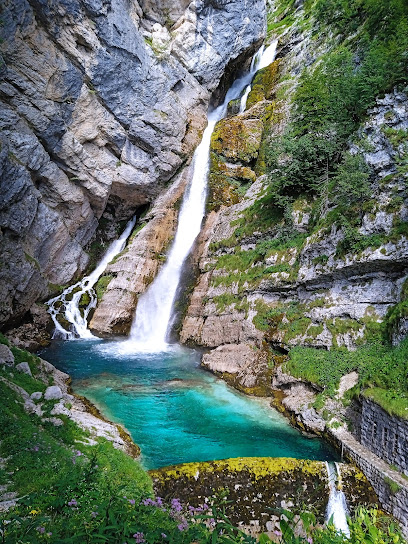
Goldenhorn/Zlatorog
Experience the stunning vistas of Goldenhorn/Zlatorog by Bohinj Lake, a must-visit destination for nature lovers and photographers in Slovenia.

Mostnica Gorge
Discover the breathtaking beauty of Mostnica Gorge, a serene nature preserve in Slovenia, perfect for hiking, photography, and wildlife observation.

Triglavski dom na Kredarici
Discover the breathtaking beauty of the Julian Alps at Triglavski dom na Kredarici, a perfect mountain retreat for adventurers and nature lovers.

Triglav
Experience the breathtaking beauty and cultural significance of Triglav, Slovenia's highest peak and a must-visit adventure destination in the Julian Alps.

Šunikov vodni gaj
Explore the breathtaking beauty of Šunikov Vodni Gaj, a serene nature preserve in Slovenia's Soča Valley with stunning landscapes and rich biodiversity.

Seven Lakes Valley
Experience the breathtaking beauty of Seven Lakes Valley, a national reserve in Slovenia, renowned for its stunning lakes and picturesque hiking trails.

Slap Iglica
Experience the breathtaking beauty of Slap Iglica Waterfall in Bohinjska Bela, a perfect blend of nature's tranquility and adventure.

Slap Grmečica
Explore the serene beauty of Slap Grmečica, a captivating nature preserve in Nomenj, Slovenia, featuring stunning waterfalls and scenic trails.

Unmissable attractions to see
Planica Nordic Centre
Explore the exhilarating heights of winter sports at Planica Nordic Centre, Slovenia's premier destination for ski jumping and Nordic skiing.
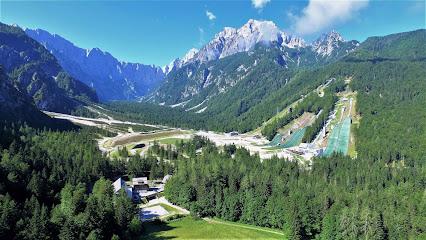
Waterfall Pericnik
Experience the stunning beauty of Waterfall Pericnik, a breathtaking two-tiered cascade in Slovenia’s heart, surrounded by lush nature and majestic mountains.

The Heart of Bled
Discover the breathtaking beauty of Lake Bled, Slovenia's enchanting jewel, with stunning landscapes, rich culture, and outdoor adventures.

Ojstrica
Discover the breathtaking views of Lake Bled from Ojstrica, a serene and scenic spot perfect for nature lovers and photographers.

Laghi di Fusine
Experience the breathtaking beauty of Laghi di Fusine, a serene escape in Tarvisio with stunning lakes and majestic mountain views.

Straza hill above Lake Bled
Discover the breathtaking views and thrilling adventures at Straza Hill, the perfect natural escape above stunning Lake Bled in Slovenia.

Velika Zaka
Experience the serene beauty of Velika Zaka, a tranquil swimming lake in Bled, Slovenia, surrounded by breathtaking natural landscapes and iconic views.

Straža Bled
Discover the thrill of tobogganing and breathtaking views at Straža Bled, a top tourist attraction in Slovenia's enchanting Bled.

Mostnica Gorge
Explore the breathtaking beauty of Mostnica Gorge, a serene nature preserve in Slovenia perfect for hiking, photography, and cultural experiences.

Zipline Dolinka Bled
Soar through the skies at Zipline Dolinka Bled, where adventure meets stunning natural beauty in Slovenia's breathtaking landscapes.

Prešeren House
Explore the life and legacy of France Prešeren at the Prešeren House, a captivating museum in the heart of Slovenia's stunning landscape.

Seven Lakes Valley
Explore the breathtaking beauty of Seven Lakes Valley, Slovenia's national reserve filled with pristine lakes, lush forests, and stunning mountain landscapes.

Slap Iglica
Explore the breathtaking Slap Iglica Waterfall in Bohinjska Bela, Slovenia, where nature's beauty and adventure await.

Slap Grmečica
Experience the breathtaking beauty of Slap Grmečica, a stunning waterfall in Slovenia, surrounded by lush nature and serene landscapes.

Jezero Bled
Discover the breathtaking beauty of Jezero Bled, Slovenia's enchanting glacial lake surrounded by majestic mountains and rich history.

Essential places to dine
Okrepčevalnica Lačni Kekec
Discover authentic Slovenian grill cuisine amidst stunning alpine views at Okrepčevalnica Lačni Kekec in Kranjska Gora.
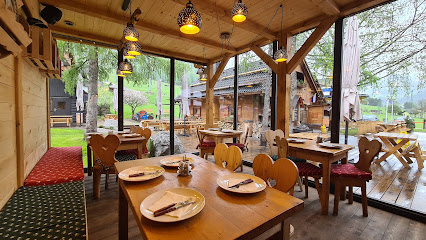
Camp Bohinj
Experience tranquility at Camp Bohinj - a perfect blend of camping charm and delightful Slovenian cuisine amid stunning alpine landscapes.

Hiša Pr' Pristavc - gostilna in pizzerija
Discover culinary delights at Hiša Pr' Pristavc – your gateway to delicious pizzas and authentic Slovenian cuisine amidst breathtaking nature.

Foksner
Discover delicious hamburgers at Foksner in Bohinjsko Jezero – a must-visit destination for food lovers amidst stunning mountain scenery.

Gostilnica Štrudl
Experience authentic Slovenian cuisine at Gostilnica Štrudl in Bohinjska Bistrica - where tradition meets taste in every dish.

Gostilna Pri Planincu
Experience authentic Slovenian cuisine at Gostilna Pri Planincu in Bled - where tradition meets breathtaking views.
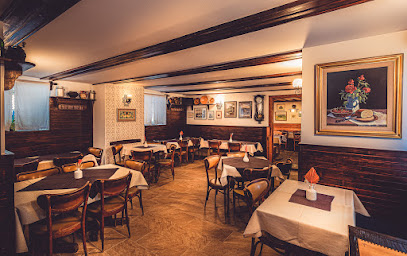
Public & Vegan Kitchen Bled
Experience vibrant vegan cuisine at Public & Vegan Kitchen Bled—where taste meets sustainability in Slovenia's beautiful lakeside town.

Old Cellar Bled
Experience exquisite dining at Old Cellar Bled - where traditional Slovenian cuisine meets exceptional wines in a cozy atmosphere.

Hisa Polonka
Experience authentic Slovenian flavors at Hisa Polonka in Kobarid, where tradition meets innovation in every dish.

Gostilna Murka
Experience authentic Slovenian cuisine at Gostilna Murka in beautiful Bled - a culinary gem with stunning views.

Gostilna pri Hrvatu, Branko Slamar s.p.
Experience authentic Slovenian cuisine at Gostilna pri Hrvatu in Bohinj - where every dish tells a story.

Gostilna Batišt Tomaž Zupan s.p.
Discover authentic Slovenian cuisine at Gostilna Batišt Tomaž Zupan in scenic Bohinjska Bela—where every meal tells a story.
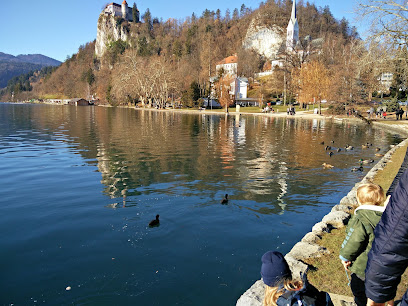
Gostilna Vintgar
Experience authentic Slovenian cuisine at Gostilna Vintgar – a culinary haven set against stunning natural beauty.

Bled Castle Restaurant
Experience exquisite cuisine with breathtaking views at Bled Castle Restaurant, a must-visit for travelers exploring Slovenia's scenic landscapes.

Gostilna Metoja Božo Bradaškja s.p.
Experience authentic Slovenian cuisine surrounded by breathtaking landscapes in Triglav National Park at Gostilna Metoja.

Markets, malls and hidden boutiques
Triglav National Park
Explore the breathtaking beauty of Triglav National Park through its Visitor Center, the perfect starting point for your Slovenian adventure.

Kompas Shop Korensko Sedlo
Explore the charm of Slovenia at Kompas Shop Korensko Sedlo, where unique gifts and local treasures await in the heart of Kranjska Gora.

Kompas Shop Rateče
Explore the enchanting Kompas Shop Rateče for unique gifts and local crafts that embody the spirit of Slovenia.

Hitri Kruhek
Discover the delightful taste of Slovenia at Hitri Kruhek, Bled's charming bakery known for its freshly baked pastries and local treats.

3glav Adventures :) The Original Emerald River Adventure & Canyoning Bob
Discover the thrill of adventure sports in Bled with 3glav Adventures, your gateway to unforgettable outdoor experiences in Slovenia's stunning landscapes.

Infocenter Triglavska roža Bled
Explore Bled's natural beauty and cultural treasures at Infocenter Triglavska roža, your gateway to Slovenia's stunning landscapes.

FromSlovenia Bled
Explore Bled's finest gift shop for gourmet chocolates, local wines, and unique souvenirs, capturing the essence of Slovenia in every purchase.

LAUNDROMAT - TRG BLED d.o.o., NEPREMIČNINE, Pralnica Laundry Speed Queen
Discover hassle-free laundry services at Laundromat - Trg Bled d.o.o. in the heart of Bled, Slovenia, ensuring your travel wardrobe stays fresh and clean.
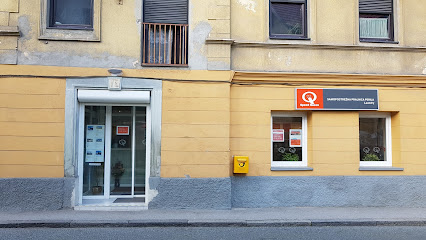
M.a.d. d.o.o., Bled
Explore M.a.d. d.o.o. in Bled for stylish clothing and used cars amidst stunning Slovenian scenery.

Fauna Fly Fishing Shop Bled, Slovenia
Discover the best fly fishing gear and guided tours in Bled, Slovenia at Fauna Fly Fishing Shop, where adventure meets expertise.

trgovina Pik Pok Bled
Explore Trgovina Pik Pok Bled, a charming gift shop offering unique souvenirs, toys, and stationery, perfect for any tourist in scenic Bled.

Shopping Center Bled
Experience the charm of Shopping Center Bled: a perfect blend of shopping, dining, and leisure amidst the breathtaking landscapes of Bled.

Natour Bled & Vintgar Gorge shuttle & Beer shop Bled
Discover the breathtaking Vintgar Gorge and indulge in local brews at Natour Bled, your perfect adventure hub in Slovenia.
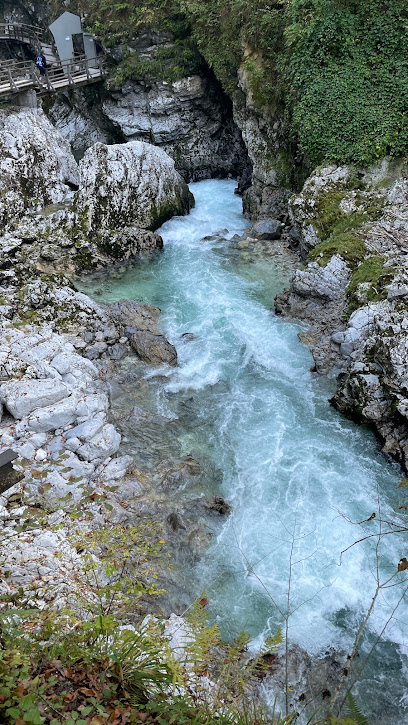
I love BLED
Explore 'I Love BLED' for unique souvenirs and gifts that capture the enchanting spirit of Slovenia's beautiful Bled region.
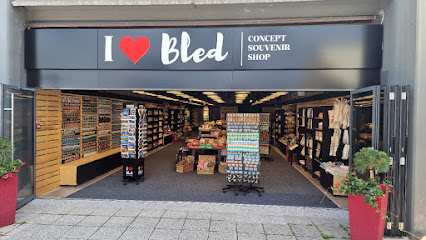
Galerija Mikame
Discover unique handmade gifts and souvenirs at Galerija Mikame, an artistic haven in the heart of Bled, Slovenia.

Essential bars & hidden hideouts
Devil's Cafe & Bar
Experience the perfect blend of relaxation and vibrancy at Devil's Cafe & Bar, where beautiful views meet delightful drinks in Bled, Slovenia.

bar Bled
Discover the vibrant nightlife at Bar Bled, where local flavors and enchanting views create unforgettable moments in the heart of Slovenia.

Kult Pub Bled
Experience the vibrant nightlife at Kult Pub Bled, where eclectic drinks and a welcoming atmosphere await in the heart of Slovenia's stunning Bled.

Tropical bar
Experience the vibrant atmosphere of Tropical Bar in Bled, a perfect blend of relaxation and entertainment amidst stunning scenery.

Bar Planinček, BLED
Experience the enchanting atmosphere at Bar Planinček, a cozy bar and coffee shop in the heart of Bled, Slovenia, with stunning views and local beverages.

Aško
Experience the vibrant local culture at Aško, a cozy bar in Bled, Slovenia, serving unique drinks and a welcoming atmosphere.

Maximal Lounge Bar & Good Food
Experience the best of Bled at Maximal Lounge Bar & Good Food, where delicious cuisine meets a vibrant atmosphere.

Bar Peron
Experience the charm of Bar Peron, a cozy pub in Zgornje Gorje, offering local drinks and a vibrant atmosphere for tourists.
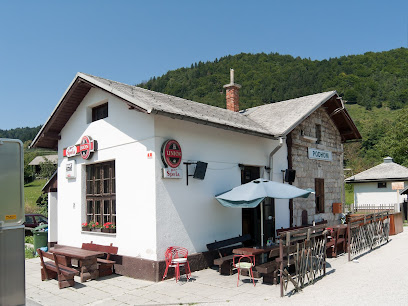
PUB BLED TROHA
Discover the vibrant atmosphere of PUB BLED TROHA, your go-to bar in Bled for craft beers, friendly vibes, and unforgettable moments.

Kava Bar Hlapon / Lakeview Bar
Discover the perfect blend of scenic views and delicious treats at Kava Bar Hlapon, your lakeside oasis in Bled.

Stop Robert Nemeček s.p.
Experience the vibrant atmosphere and wide drink selection at Stop Robert Nemeček s.p. in the heart of Bled, Slovenia.

À propos Cocktail Bar
Discover the charm of À propos Cocktail Bar in Bled, where delightful drinks, desserts, and breakfast await in a cozy atmosphere.

Club Stop
Experience the vibrant nightlife of Bled at Club Stop, where great drinks and a cozy atmosphere await you.

Pub Lovec
Explore the enchanting atmosphere of Pub Lovec in Bled, a perfect bar for local brews and delightful bites amidst stunning scenery.

Ethno Alp Lounge
Experience lakeside relaxation at Ethno Alp Lounge, where delicious burgers and refreshing drinks meet stunning views in Lesce, Slovenia.

Local Phrases about Triglav National Park
-
- HelloZdravo
[Zdrah-voh] - GoodbyeNasvidenje
[Nah-svee-deh-nyeh] - YesDa
[Dah] - NoNe
[Neh] - Please/You're welcomeProsim
[Proh-seem] - Thank youHvala
[Hvah-lah] - Excuse me/SorryOprostite
[Oh-proh-stee-teh] - How are you?Kako ste?
[Kah-koh steh?] - Fine. And you?Dobro. In vi?
[Doh-broh. Een vee?] - Do you speak English?Govorite angleško?
[Goh-voh-ree-teh ahn-gleh-shkoh?] - I don't understandNe razumem
[Neh rah-zoo-mehm]
- HelloZdravo
-
- I'd like to see the menu, pleaseRad bi videl jedilnik, prosim
[Rahd bee vee-del ye-deel-neek, proh-seem] - I don't eat meatNe jem mesa
[Neh yehm meh-sah] - Cheers!Na zdravje!
[Nah zdrahv-yeh!] - I would like to pay, pleaseRad bi plačal, prosim
[Rahd bee plah-chahl, proh-seem]
- I'd like to see the menu, pleaseRad bi videl jedilnik, prosim
-
- Help!Pomoč!
[Poh-moh-ch!] - Go away!Pojdi stran!
[Poh-jdee strahn!] - Call the Police!Pokličite policijo!
[Poh-klee-chee-teh poh-lee-tsee-yoh!] - Call a doctor!Pokličite zdravnika!
[Poh-klee-chee-teh zdrahv-nee-kah!] - I'm lostIzgubil sem se
[Eez-goo-beel sehm sehh] - I'm illBoln sem
[Boh-ln sehm]
- Help!Pomoč!
-
- I'd like to buy...Rad bi kupil...
[Rahd bee koo-peel...] - I'm just lookingSamo gledam
[Sah-moh gleh-dahm] - How much is it?Koliko stane?
[Koh-lee-koh stah-neh?] - That's too expensiveTo je predrago
[Toh yeh preh-drah-goh] - Can you lower the price?Lahko znižate ceno?
[Lah-koh znee-zah-teh cheh-no?]
- I'd like to buy...Rad bi kupil...
-
- What time is it?Koliko je ura?
[Koh-lee-koh yeh oo-rah?] - It's one o'clockJe ena ura
[Yeh eh-nah oo-rah] - Half past (10)Pol desetih
[Pohl deh-seh-teeh] - MorningJutro
[Yoo-troh] - AfternoonPopoldne
[Poh-pohl-dneh] - EveningVečer
[Veh-chehr] - YesterdayVčeraj
[Vcheh-rye] - TodayDanes
[Dah-nehs] - TomorrowJutri
[Yoo-tree] - 1Ena
[Eh-nah] - 2Dva
[Dvah] - 3Tri
[Tree] - 4Štiri
[Shtee-ree] - 5Pet
[Peh-t] - 6Šest
[Shehst] - 7Sedem
[Seh-dehm] - 8Osem
[Oh-sehm] - 9Devet
[Deh-veht] - 10Deset
[Deh-seht]
- What time is it?Koliko je ura?
-
- Where's a/the...?Kje je ...?
[Kyeh yeh ...?] - What's the address?Kakšen je naslov?
[Kahk-shen yeh nahs-lohv?] - Can you show me (on the map)?Mi lahko pokažete (na zemljevidu)?
[Mee lah-koh poh-kah-zheh-teh (nah zehm-lyeh-vee-doo)?] - When's the next (bus)?Kdaj je naslednji (avtobus)?
[Kdy-eye yeh nah-slehd-nyee (ow-toh-boos)?] - A ticket (to ....)Eno vozovnico (do ....)
[Eh-noh voh-zoh-vnee-tsoh (doh ....)]
- Where's a/the...?Kje je ...?
History of Triglav National Park
-
Triglav National Park, located in the Julian Alps of Slovenia, has a rich geological history dating back to the Mesozoic era. The area has been shaped by tectonic movements and glacial activity, resulting in its dramatic landscapes of peaks, valleys, and glacial lakes. The park’s earliest human inhabitants were the Illyrians and later the Romans, who left behind evidence of their presence through various archaeological findings such as tools and pottery.
-
In the 6th century, Slavic tribes began to settle in the region, gradually establishing a network of villages and communities. During the medieval period, the area that is now Triglav National Park was influenced by the feudal system, with local lords and the Church owning large swathes of land. Traces of medieval life can still be seen in the form of ancient churches, fortresses, and farmsteads scattered throughout the park.
-
Mount Triglav, the highest peak in Slovenia, holds significant cultural and national symbolism. According to local legend, the mountain is named after the Slavic god Triglav, who had three heads representing the sky, earth, and underworld. The mountain has become a symbol of Slovene identity and pride, prominently featured in the country’s coat of arms and flag. The first recorded ascent of Mount Triglav was in 1778 by four brave locals from Bohinj.
-
During World War I, the Julian Alps, including the area that is now Triglav National Park, were the site of intense military activity. The Isonzo Front, one of the war’s most brutal battlefields, saw numerous battles between the Austro-Hungarian and Italian armies. The remnants of trenches, bunkers, and military cemeteries still dot the landscape, serving as a poignant reminder of the region’s turbulent past.
-
The idea of preserving the natural beauty of the Julian Alps dates back to the early 20th century. In 1924, the first protected area was established around Mount Triglav, marking the beginning of what would eventually become Triglav National Park. The park was officially designated in 1961 and expanded to its current boundaries in 1981, covering approximately 840 square kilometers. The establishment of the park was a significant step in the conservation of Slovenia’s natural heritage.
-
Triglav National Park is not only a natural treasure but also a repository of cultural heritage. The park is home to traditional Alpine farming communities that have maintained their way of life for centuries. Visitors can explore picturesque villages like Stara Fužina and Dovje, where traditional wooden hayracks, stone houses, and centuries-old customs are still preserved. The park also hosts various cultural events and festivals, celebrating the rich folklore and traditions of the region.
-
In recent decades, Triglav National Park has become a model for conservation and sustainable tourism. Efforts to protect its unique ecosystems and biodiversity are ongoing, with various initiatives aimed at preserving the park’s flora and fauna. The park’s administration works closely with local communities, scientists, and environmental organizations to ensure that the natural and cultural heritage of Triglav National Park is safeguarded for future generations.
Triglav National Park Essentials
-
Triglav National Park is located in the northwestern part of Slovenia. The nearest major airport is Ljubljana Jože Pučnik Airport, approximately 60 kilometers away. From the airport, you can rent a car, take a taxi, or use public transportation to reach the park. Buses and trains from Ljubljana to towns such as Bled and Bohinj, which serve as gateways to the park, are also available. Driving is a convenient option, offering flexibility to explore various parts of the park at your own pace.
-
Once within Triglav National Park, the most effective way to get around is by car or bicycle. Public buses connect major towns and villages, but services can be infrequent. Hiking is a popular way to explore the park's trails and natural beauty. Taxis are available but can be expensive. Car rentals are widely available and recommended for those looking to explore more remote areas.
-
The official currency in Slovenia is the Euro (EUR). Credit and debit cards are widely accepted in hotels, restaurants, and shops, but it's advisable to carry some cash for use in more remote areas where card payments may not be possible. ATMs are available in towns like Bled and Bohinj, so withdrawing cash is generally not an issue.
-
Triglav National Park is generally very safe for tourists. However, as with any travel destination, it's important to take standard precautions. Be mindful of your belongings, especially in crowded areas. There are no specific high-crime neighborhoods targeting tourists, but it is always good practice to stay vigilant and aware of your surroundings. When hiking, ensure you're prepared with appropriate gear and inform someone of your plans.
-
In case of emergency, dial 112 for immediate assistance. This number connects you to police, fire, and medical services. The nearest hospitals are located in Jesenice and Ljubljana. Pharmacies are available in towns like Bled and Bohinj for minor health issues. It is advisable to have travel insurance that covers medical emergencies, including potential evacuation.
-
Fashion: Do wear comfortable and practical clothing suitable for outdoor activities. Avoid wearing flashy or provocative attire. Religion: Do respect local religious customs and traditions. Remove hats and dress modestly when visiting religious sites. Public Transport: Do be courteous and respectful. Offer your seat to elderly passengers. Don't eat or drink on public transport. Greetings: Do greet locals with a simple 'Dober dan' (Good day). A handshake is common. Eating & Drinking: Do try local Slovenian cuisine and accept food offerings graciously. Don’t waste food as it is considered disrespectful.
-
To experience Triglav National Park like a local, visit during the off-peak seasons in spring or autumn when the park is less crowded. Engage with local guides and rangers who can share insights about the park’s flora, fauna, and history. Explore lesser-known trails and visit traditional Alpine huts known as 'planinske koče' for a taste of local hospitality. Don’t miss local events and festivals that showcase Slovenian culture and traditions.
Nearby Cities to Triglav National Park
-
Things To Do in Kranjska Gora
-
Things To Do in Bled
-
Things To Do in Škofja Loka
-
Things To Do in Nova Gorica
-
Things To Do in Klagenfurt
-
Things To Do in Ljubljana
-
Things To Do in Kamnik
-
Things To Do in Sežana
-
Things To Do in Postojna
-
Things To Do in Trieste
-
Things To Do in Koper
-
Things To Do in Izola
-
Things To Do in Piran
-
Things To Do in Portorož
-
Things To Do in Bad Gastein













